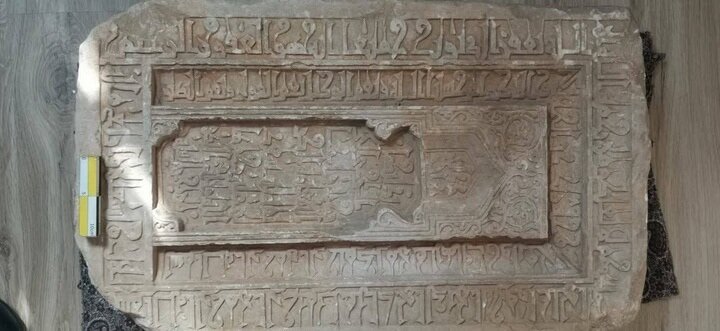1000-year-old carved tombstone discovered in UNESCO-listed Yazd

TEHRAN - A historic tombstone dating back almost 1,000 years has been uncovered during restoration work at Dowlatshahi Mosque in the UNESCO-listed city of Yazd, central Iran.
Majid Oloumi, director of Yazd’s World Heritage base, announced the discovery on Monday, stating that the tombstone was found in the small mihrab (prayer niche) of the Dowlatshahi Mosque, located in the Charsouq Shahi section of a historical bazaar within the ancient city.
Oloumi said the tombstone bears an inscription in Kufic script dated 493 AH (approximately 1099 CE). “It was uncovered beneath layers of construction materials during ongoing maintenance at the mosque.”
The object measures approximately 80 by 40 centimeters and was embedded one meter deep in the mihrab. Following its discovery, the stone was carefully removed under the supervision of archaeological experts and heritage protection officials from the Cultural Heritage, Tourism, and Handicrafts Department of Yazd province.
The inscription on the tombstone includes Quranic verses on its two margins. The central frame of the stone mentions titles referring to the tomb’s occupant, while the lower margin indicates the date of death as 493 AH.
Oloumi noted that Dowlatshahi Mosque and the Charsouq Shahi complex date back to the period of the Muzaffarid dynasty’s rule in Yazd. He added that the tombstone’s dating to the era of the Kakuyid dynasty could provide new historical insights into the city’s past. (Kakuyids were a Shia Muslim dynasty of Daylamite origin).
“Historical, architectural, and archaeological studies on the tombstone and the mosque site may reveal important information about Yazd’s history and architecture,” he said.
Oloumi emphasized the need for all restoration and protection efforts in Yazd’s historic areas to be carried out under expert supervision, given the city’s rich layers of concealed historical heritage.
Dowlatshahi Mosque remains a significant monument reflecting Yazd’s medieval Islamic architecture and heritage.
In July 2017, the historical core of Yazd, the provincial capital, was named a UNESCO World Heritage site. Yazd is regularly referred to as a delightful place to stay, or a “don’t miss” destination by almost all of its visitors. The city is full of mudbrick houses that are equipped with innovative badgirs (wind catchers), atmospheric alleyways, and many Islamic and Iranian monuments that shape its eye-catching city landscape.
AM
Leave a Comment